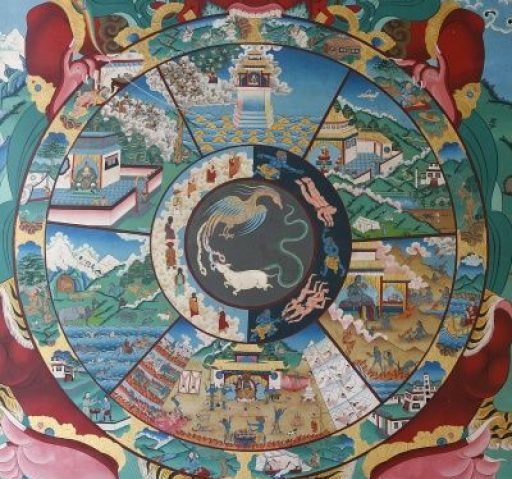Jan 28, 2023
Revisiting Plato’s Cave : Cinematic Apparatus
Jean Louis Baudry in his The Apparatus: Metapsychological Approaches to the Impression of Reality in Cinema (1975) makes the analogy of comparing our cinematic experience with the analogy of Plato’s Cave.

We as humans think we are free, but we are trapped in the cave of reality, enslaved watching images on a cave wall. Those images are not real light. Instead, we are seeing the flickering of the light from the fire. We can’t even see the fire.
[Socrates] And now, I said, let me show in a figure how far our nature is enlightened or unenlightened: –Behold! human beings living in a underground cave, which has a mouth open towards the light and reaching all along the cave; here they have been from their childhood, and have their legs and necks chained so that they cannot move, and can only see before them, being prevented by the chains from turning round their heads.
Above and behind them a fire is blazing at a distance, and between the fire and the prisoners there is a raised way; and you will see, if you look, a low wall built along the way, like the screen which marionette players have in front of them, over which they show the puppets.
[Glaucon] I see.
[Socrates] And do you see, I said, men passing along the wall carrying all sorts of vessels, and statues and figures of animals made of wood and stone and various materials, which appear over the wall? Some of them are talking, others silent.
[Glaucon] You have shown me a strange image, and they are strange prisoners.
[Socrates] Like ourselves, I replied; and they see only their own shadows, or the shadows of one another, which the fire throws on the opposite wall of the cave?
[Excerpt from the Republic, The Allegory of the Cave in Book VII , Benjamin Jowett trans (Vintage, 1991), p. 253]
Why are films so effective? Why are we so addicted to movies? Why do such film icons as Bruce Lee become so famous and important to some of us?
In one way, it is because films reflect how we view reality by paralleling our limited perspectives. Films are most successful when they mirror our reality. We pay actor, directors and movie studios millions and millions of dollars to entertain us.
But look at the biggest money making films of all time like Titanic or The Dark Knight or Star Wars. Do such films really reflect our reality? Do any of us look like the stars of those films? No. Yes because such films are myths or extensions of our desires and attachments. We want much more than the harsh realities of life.
The allegory, The myth

We are in the cave surrounded by puppet masters and grand storytellers. Drugged we go to work, eat, rest, and are entertained to death, for we die in the cave. We love creature comforts that make the cave more like home.
In 180 AD, Chinese scientist and inventor Ting Huan created the first prototype cinematic device similar to the zoetrope. Consecutive images are placed in the device and as it spins, our persistence of vision creates the illusion that the images are moving. This proto-cinematic adventure becomes addictive and a fun diversion from reality.
Living in different caves, an Asian star shines differently in Asia than in America even if that star is Asian American. Our persistence of cultural vision is trained under different social lighting systems. We see the star differently. Our egos manipulate our ignorance to create what we think the Other should conform to.
For years, under Yellowfacing, we wanted White actors to act like Asian actors, for example, we wanted David Carradine (1936- ) as Kwai Chang Caine, the star of Kung Fu, and Warner Oland (1879-1938) as Charlie Chan and Dr. Fu Manchu. Such stars gave us the illusion of being yellow, for we are not ready for reality. It remains hard to break through the illusions that comfort us.
It still remains hard for Asian actors to find good roles in Hollywood even though stars like Bruce Lee helped to break down some of the yellow barriers of perception.
